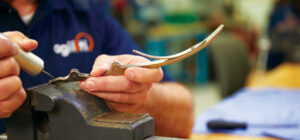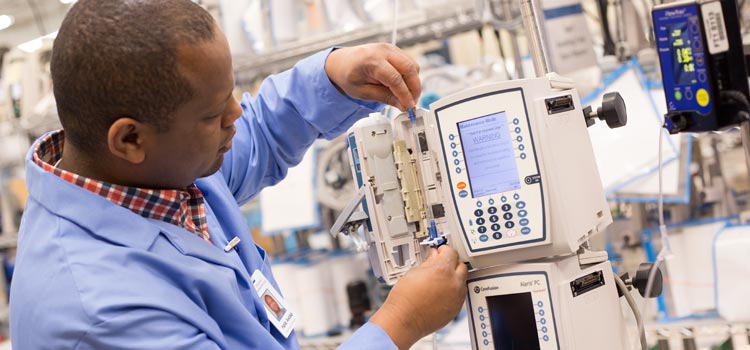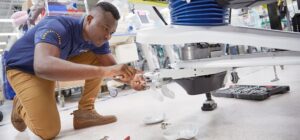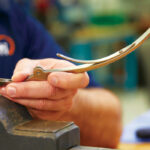Hospital clinical engineering departments are increasingly squeezed for time and resources, making it harder for CE directors to achieve objectives that can have a greater impact for their team and hospital.
Clinical engineering departments today are playing a bigger role in the financial success of their hospital. With the rapid advancement of technology and the rise of software-enabled devices, the delivery of patient care has fundamentally changed. Today’s hospital operations require a supporting cast of technical experts that can both repair increasingly sophisticated devices while predicting what new technology is right for their hospital. The challenge is that many CE departments are stretched too thin addressing these issues, and it’s putting a strain on clinical engineering budgets and responsibilities. This pressure makes it harder for clinical engineering directors to install value-added changes in the department.
Tim Moss, Director of Resident Based Programs at Agiliti, is no stranger to the difficulties facing clinical engineering departments. Moss has spent 25 years working at all levels within clinical engineering, including serving as the system director for a 14-hospital network. Also, he has worked for various clinical engineering ISOs in management and leadership roles.
We sat down with Tim to discuss areas of opportunity for clinical engineering departments to ensure they are setting themselves up for success in the years ahead. In our conversation, Tim provided three key takeaways that can add value and strengthen your clinical engineering department:
- Consider the broader impact of medical equipment downtime
- Analyze how much time your team spends servicing low-level vs. high-level equipment
- Reduce turnover by establishing a strategic career plan for your biomedical technicians
1. Consider the Broader Impact of Medical Equipment Downtime – Think Outside Your Department
Clinical engineering departments usually don’t grasp the broader implications of medical equipment downtime. This is because they’re busy dealing with the specific details of fixing what’s broken. Even if they aren’t considered, other outcomes can still be tied back to equipment being down.
For example, how is the clinical staff being affected by unavailable equipment? What’s the true impact on the patients who need that equipment? What is the total cost impact of extended downtime?
“Those are the things that are normally not in front of clinical engineering directors,” Moss says. “In fact, a lot of clinical engineering departments don’t know how much equipment is really being rented.”
And that’s a problem – especially if rental frequencies are up due to equipment downtime.
If there isn’t enough equipment ready for patient use, hospitals then think they need to buy more. This leads to an increased load on the clinical engineering team. The bigger the load, the longer the downtime and the more equipment is rented.
When the clinical engineering department’s only visibility to rental equipment is checking what comes in, you lose the bigger picture of what is driving the need for rental. When you see what’s happening in the rest of the hospital, the focus shifts from needing more equipment to better management of what you already have.
2. Analyze How Much Time Your Team Spends Servicing High-value, High-revenue Generating Equipment vs. Low-value, Low-revenue Equipment
Effectively managing your equipment is about more than fixing the equipment on time. It’s also about balancing the workload of staff based on the type of equipment in the organization.
A typical rule of thumb is that a full-time general biomed technician can support about 1,000-1,200 devices. But as you get into more sophisticated equipment, your equipment-to-technician ratio should decrease.
“Your imaging technician is going to [be responsible for] three or four [imaging devices], or a maximum of 50 items” if you include lower-value equipment, says Moss, “because the devices he or she is supporting are much more technically complicated and take a lot more time, and the preventive maintenance requires [more time commitment].”
The question then becomes, what level techs are working on what types of equipment? Are your BMET 3s working on lower-end devices just to “put out the fires”? If they are, is this preventing them from servicing higher-end equipment? And most importantly, are you utilizing your resources in the best way possible?
Some hospitals choose to outsource the maintenance on their beds and infusion pumps to recapture the time their techs spend servicing, searching for and tracking down this equipment. Not only does this alleviate the burden on the clinical engineering team, but there is greater value in having your most talented staff members focused on high-value devices that have an immediate financial impact when this equipment is not available for patient use.
3. Reduce Turnover by Establishing a Strategic Career Plan for Your Biomed Technicians
Biomedical technician turnover is a real challenge for clinical engineering directors, and it is only going to prove costlier with more and more of the workforce starting to retire.
One key to retaining quality technicians is to have a program that gives them a clear path to grow their career. In fact, 69 percent of tech professionals say that advancement opportunity is their biggest motivator to leave their current job.
“In order to attract the right skilled individuals, you’ve got to be able to have a program that’s going to grow them, that gives them a career path. If they are biomeds, what does it take to get them to laboratory service engineering, or imaging, or an MRI service engineer?” Moss says.
The younger generation of technical experts entering the field expect to work somewhere that offers access to new technologies, a modern tech stack and a clear sense of purpose in the work they do. But most importantly, they want the chance to grow. Help them to build critical project management skills that enable them to lead special projects. Improve IT abilities through continuous education on current and new products. And develop goals which demonstrate the daily and direct impact your clinical engineering team has on the financial and clinical outcomes of the hospital. In the process, you’ll begin to create a culture in which technicians want to participate.
Unfortunately, it’s difficult for many clinical engineering leaders to find the time to plan training or focus on career development. With already high workloads, it can also seem impossible to have a team member focused on non-work related tasks. That’s when recruiting additional, temporary help can be to your advantage.
“Identifying additional outside resources that can help you with the lower-end equipment can help you focus on your staff and have the time for them to get trained,” says Moss.
These three tips can play a big role in helping clinical engineering leaders to develop a team that is prepared to address upcoming technology challenges. For more detailed information on how to attract and retain top biomed tech talent, view this tip sheet.
Visit our Resource Center to discover more, or learn more about Supplemental Biomedical Staffing.











